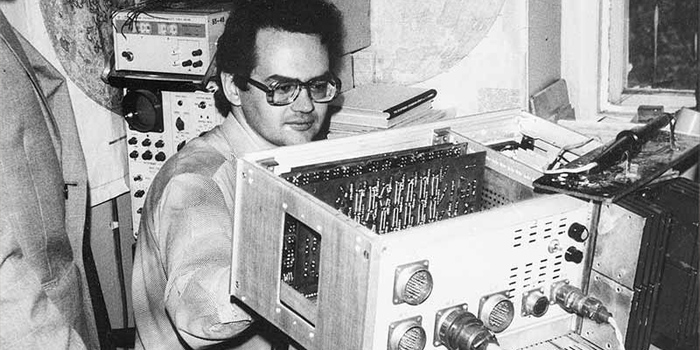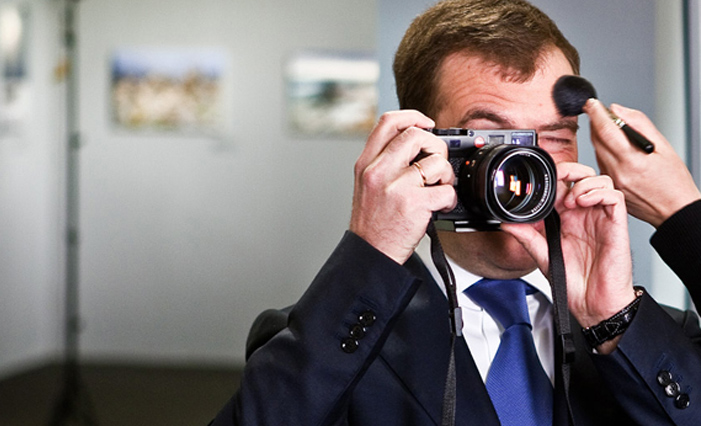Invisible technology
Sufficient and redundant technology
Almost every technology is born insufficient: it is bulky, coarse and inconvenient. Then, if the stars develop successfully, the technology will get stronger and become available to the masses. At this stage, it is still far from perfect and we actively compare the number of horses under the hood, gigabytes in hard drives and pixels in monitors.

')
Constant innovations in related areas and the direct development of technology give new reasons to measurewith functionalities until it (technology) becomes fully sufficient. I'm talking about the level of development after which further improvements are becoming less important for the user. The level at which the function works so well that it becomes, in fact, "invisible" to humans.
A good example here is the image on the display.

Having gone from a stone tablet and papyrus to a monitor, the technology finally went beyond the limitations of the human eye: on retina displays, the size of one point is so small that a person with average vision is no longer able to distinguish a single pixel (from a distance of usual use). Does it make sense to race for an even larger screen resolution, or is we waiting for the development of a fundamentally different way to transfer data


Audio recording technology, on the contrary, went down to the level of the average person's hearing. Although lossy audio compression formats discard a significant amount of information, the vast majority of people cannot distinguish a compressed track from the original. Coupled with the fact that the compression procedure allows you to reduce the size of the music file by almost an order of magnitude, MP3 (and other compression formats such as Apple's AAC) became the standard for the delivery and consumption of audio content.
The opposite example, in my opinion, can be called a 41-megapixel camera in one of the recent Nokia phones.


Leaving aside the issue of image quality, this figure is significantly higher than that of many “professional” SLR cameras. Moreover, it is more than capable of displaying any modern, widely used display, including high-definition televisions.
Someone will say about the need for the possibility of framing pictures, digital zoom “lossless”, taking pictures 1: 1 to what you see with your eye and they are right in their own right, but for users like me this figure seems redundant. The scenario of using a telephone camera is often much simpler - I pulled it out, clicked it, and went on. There is a feeling that the developers of this phone have exceeded the threshold of rational utility and the extreme resolution of the camera - a marketing feature.
Often, the achievement of the technology level of adequacy is capable of a key way to change the industry. So, the MP3 and digital players mentioned here kill the music CD sales model, the cameras in the phones destroy the market of household soap dishes, and the tablets with clear displays make the printing industry sad to think about the future ... But we, the consumers, have to enjoy the fruits of progress and maybe make him his bit.

English version
Almost every technology is born insufficient: it is bulky, coarse and inconvenient. Then, if the stars develop successfully, the technology will get stronger and become available to the masses. At this stage, it is still far from perfect and we actively compare the number of horses under the hood, gigabytes in hard drives and pixels in monitors.


')
Constant innovations in related areas and the direct development of technology give new reasons to measure
A good example here is the image on the display.


Having gone from a stone tablet and papyrus to a monitor, the technology finally went beyond the limitations of the human eye: on retina displays, the size of one point is so small that a person with average vision is no longer able to distinguish a single pixel (from a distance of usual use). Does it make sense to race for an even larger screen resolution, or is we waiting for the development of a fundamentally different way to transfer data


Audio recording technology, on the contrary, went down to the level of the average person's hearing. Although lossy audio compression formats discard a significant amount of information, the vast majority of people cannot distinguish a compressed track from the original. Coupled with the fact that the compression procedure allows you to reduce the size of the music file by almost an order of magnitude, MP3 (and other compression formats such as Apple's AAC) became the standard for the delivery and consumption of audio content.
The opposite example, in my opinion, can be called a 41-megapixel camera in one of the recent Nokia phones.


Leaving aside the issue of image quality, this figure is significantly higher than that of many “professional” SLR cameras. Moreover, it is more than capable of displaying any modern, widely used display, including high-definition televisions.
Someone will say about the need for the possibility of framing pictures, digital zoom “lossless”, taking pictures 1: 1 to what you see with your eye and they are right in their own right, but for users like me this figure seems redundant. The scenario of using a telephone camera is often much simpler - I pulled it out, clicked it, and went on. There is a feeling that the developers of this phone have exceeded the threshold of rational utility and the extreme resolution of the camera - a marketing feature.
Often, the achievement of the technology level of adequacy is capable of a key way to change the industry. So, the MP3 and digital players mentioned here kill the music CD sales model, the cameras in the phones destroy the market of household soap dishes, and the tablets with clear displays make the printing industry sad to think about the future ... But we, the consumers, have to enjoy the fruits of progress and maybe make him his bit.


English version
Source: https://habr.com/ru/post/142150/
All Articles